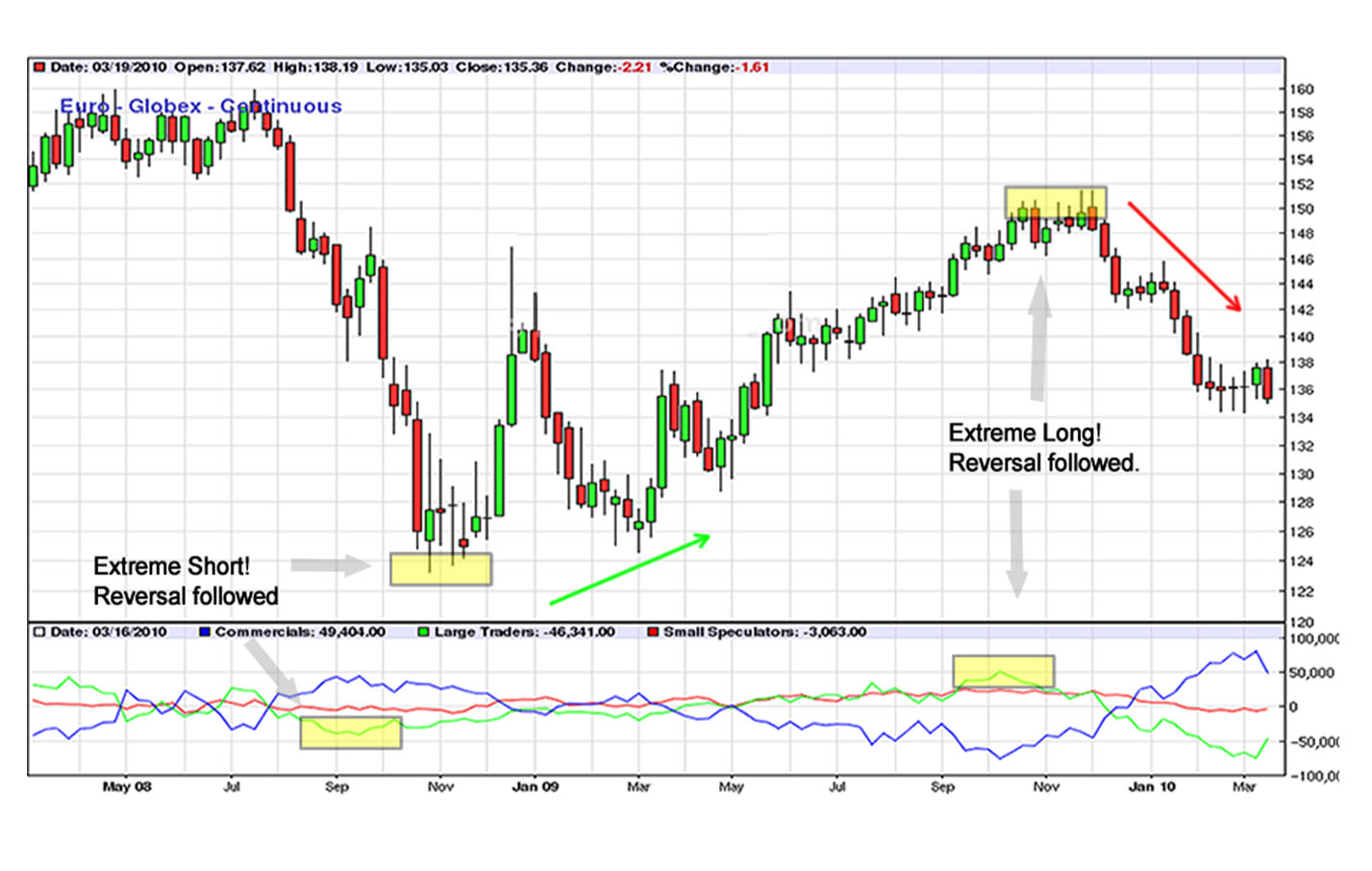Understanding the Commitment of Traders (COT) report helps traders understand the market sentiment and what type of positions (long/short/spread) are market participants holding. This can inform traders about the potential entry and exit points.
In this article, we will discuss what COT reports are and how to read them correctly.
What are COT reports?

The Commitment of Traders (COT) report is a summary of the holdings of market participants, published weekly by the Commodity Futures Trading Commission (CFTC). It provides traders with an overview of the US futures market.
It is usually published every Friday at 3:30 pm EST, including data collected on the previous Tuesday. This information helps investors understand how many long, short and spread positions combine together to make the open interest and is available in both short and long format.
Understanding COT report data
Reporting levels established
The Commodity Futures Trading Commission (CFTC) sets specific thresholds for reporting positions. These thresholds vary depending on the commodity being traded and are designed to capture the activity of the major players in the market. These are like minimum requirements for a trader's holdings to be included in the Commitments of Traders report.
Traders hold positions equal
The COT report focuses on traders whose positions meet or exceed the CFTC's established reporting levels. This captured data allows analysts to assess market sentiment and positioning. By understanding which types of traders (such as commercials, speculators. etc.) hold large long or short positions, the traders reports can provide clues about potential future market movements.
COT Report structure and content
The COT reports provide traders with an understanding of the market dynamics. It is a multi-layered document, with key components given below:
Report layout
The COT report has various sections. Each section caters to a specific level of detail:
- Legacy report: This is the basic format, offering a high-level overview of Tuesday’s open interest (total number of outstanding contracts) and positioning (long or short positions) for different trader categories
- Supplemental reports: These provide additional breakdowns, often focusing on specific contracts or delivery months
- Disaggregated COT reports: Here, the traders data gets even more granular, detailing positions by individual traders exceeding certain thresholds
- Traders in financial futures reports: This section focuses on the positioning of traders, specifically within the financial futures markets
Data collection and analysis
The COT report relies on data collected from the trenches of the futures market. Here's how it works:
- Data sources: The CFTC gathers information from various reporting firms, including futures commission merchants (FCMs), clearing members, and even foreign brokers and exchanges. These firms provide data on their clients' holdings
- Analysis and presentation: Once the data is collected, the CFTC analyzes it to identify patterns and trends in trader positioning. This analysis is then presented in the various sections of the trader’s COT report, offering valuable insights into market sentiment (bullish or bearish) and overall positioning (who holds what and how much)
How to read COT reports?
-
Focus on net positions
The COT report categorizes traders into groups like commercials (hedgers) and non-commercials (speculators). One should not get hung up on individual categories and focus on net positions (long minus short positions) for each group. A large net long position by non-commercials suggests a bullish bias, while a large net short position might indicate a bearish outlook.
-
Analyze changes over time
The COT report is most powerful when viewed dynamically. Look for trends in net positions over several weeks. An increasing net long position by commercials in a grain contract might suggest they're entering positions to get future supplies, potentially foreshadowing rising financial asset prices.
-
Consider open interest
Open interest refers to the total number of outstanding contracts. A rising open interest alongside increasing net longs by a particular group could signal stronger conviction and potentially larger price movements.
-
Look at the context
The COT report should be combined with other market data (such as economic indicators and news events) to create a complete picture of the market sentiment. A large net short position by speculators might not be bearish if there's strong positive economic news.
-
Do not chase extremes
Extreme readings in net positions (either very high longs or shorts) can indicate a market nearing a turning point. However, these extremes can persist for a while, and the COT report shouldn't be used for short-term trading signals.
How to apply COT insights to trading decisions
The COT report can be integrated into existing trading strategies to potentially improve overall trading performance:
Confirmation and validation
The COT report can be employed to confirm or challenge existing analyses derived from technical indicators or fundamental data. For instance, if technical analysis suggests a potential uptrend, a rise in net long positions by commercials in the trader’s COT report would strengthen this bullish outlook.
Gauging market sentiment
The COT report gauges market sentiment, revealing the positioning of various trading groups. This information can be used to assess whether the market leans bullish or bearish, potentially leading to adjustments in trading biases.
For example, a trader with a bearish bias on a currency pair based on economic data might reconsider their position if the COT report indicates significant net long positions held by non-commercials.
Identifying potential inflection points
Extreme readings in net positions within the COT report can signal a potential market reversal. However, it is crucial to exercise caution, as these extremes may persist for extended periods. The COT report should not be used solely for short-term trading signals. Confirmation from other indicators is necessary to identify potential trend shifts.
Utilizing case studies
Analyzing case studies of how other traders have utilized the COT report to identify trends and sentiment can be helpful. By examining instances where COT data, combined with other analyses, led to accurate trades, traders can refine their own COT integration strategies and potentially avoid common pitfalls. Several financial websites and publications offer case studies and analyses based on COT data.
For example, in 2020, silver prices soared due to less risky purchasing. However, the COT report showed commercials (silver miners) increasing net short positions. This signaled potential exit pressure, and shortly after, silver prices reversed as predicted by the COT data.
Navigating through the advantages and risks of depending on COT reports
The COT reports offer a lens into the financial market sentiment. It acts as a sentiment indicator, allowing traders to assess if the market leans bullish or bearish based on the net positions. However, extreme readings in net positions can be misleading.
They may not always translate into immediate price movements, and the market can stay in overbought or oversold territory for extended periods. Hence, trading strategies should integrate COT data with other market analysis tools (technical indicators, fundamental data).
Trade smarter with low spreads and lightning-fast executions. Open a live account today and experience unparalleled support from our dedicated customer service team. Blueberry is here to help every step of the way!
Trade Now Open a Demo Account
